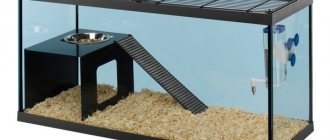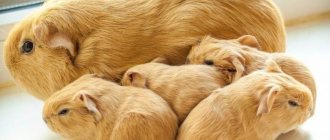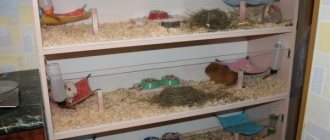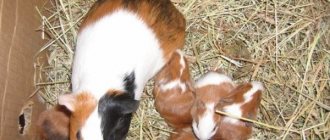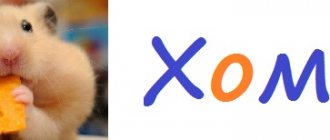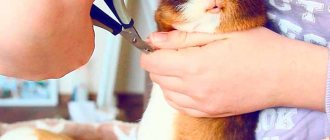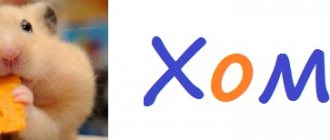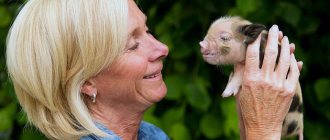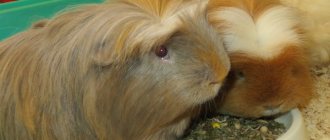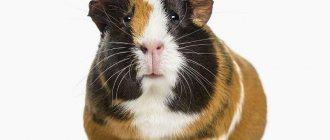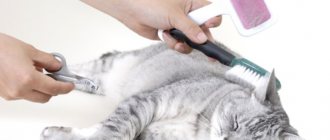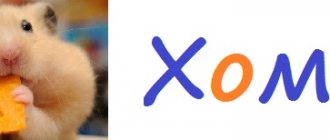Guinea pigs are energetic and funny animals that are purchased for positive emotions. Pets bring joy if they are healthy, well-groomed, and willing to interact. It is important to initially get a young animal so that it can please its owners for a long time. After all, the animal’s eyelid is not that long. Sometimes it becomes necessary to determine the age of a guinea pig. How to do it right?
Lifespan
The lifespan of a guinea pig is from 5 to 8 years, in rare cases they live longer (up to 10 years). This largely depends on genetics and the owner’s conscientiousness towards the pet. With proper care and a balanced, high-quality diet, the animal can become a long-liver.
In the age-related physiology of a rodent, 4 main stages can be noted:
- Milk feeding (from 1 to 21 days).
- Immature period (1-2 months and then up to 3 months).
- Fertility period (6-18 months and then up to 35-40 months).
The aging period begins at 4-5 years and lasts up to 7-8 years. A rodent that is not exposed to stress due to loneliness or “quarrels” with relatives has a greater chance of longevity. A guinea pig that has not been injured while free-range will also live longer.
The pet store employee or breeder must provide information about the age of the guinea pig. If the future owner has any doubts, you can try to independently determine what age category the animal belongs to.
When are babies given away?
Usually breeders give away pigs at the age of one month, but if you look at it, the young animals are ready for life without a mother after 21 days. At the same time, this is only relevant for properly grown, strong individuals, whose weight by this time is already 200–250 g.
Important! Already in the first month of life, pigs develop character traits, so when choosing a suitable pet for yourself, you can take either the most active of the litter or the more phlegmatic one, which will sleep most of the time and will not constantly rush around the cage.
If possible, young animals are left next to the female for up to 45 days and given to new owners only when they weigh 450 g. Often this solution will be the most optimal, especially considering the possibility of purchasing breeding animals only 60–75 days after their birth (weight individuals at this age stage are approximately 600–700 g). Sometimes buyers are interested in adult females that are completely ready to give birth to healthy offspring. The best solution here would be two- or four-year-old rodents that are in excellent health.
Methods for determining age
There are several ways to determine the age of a guinea pig. You can focus on body weight and parameters, lifestyle (slowness or activity) and other external signs.
Body weight and size
Up to 10 weeks of life there are no significant deviations between the body weight of males and females. A significant upward difference in weight in “boys” becomes noticeable after 10 weeks and older. Also, the physiological parameters of guinea pigs, for example, the ratio of age, height and body weight, directly depend on the quality of care, the built-up nutrition system and the breed of rodents.
The average size of males is 30-35 cm, females - 20-25 cm. The increase in body weight after 22 weeks decreases and stops at the age of 12-14 months. The weight of an adult guinea pig ranges from 700 to 1800 g (the average for males is 1500 g, for females 1200 g).
Behavioral features
When comparing the behavior of young and older individuals, significant differences can be noticed.
A young rodent is characterized by the following behavioral features:
- high physical activity and curiosity;
- sniffs previously uneaten food and chews it with interest;
- communicates with people and is always happy to communicate;
- plays a lot and actively explores the “possession”.
Activity decreases after 4-5 years of the animal’s life, which gradually becomes slow. At this stage, mature guinea pigs prefer familiar, favorite food, without showing noticeable interest in unfamiliar food. They behave apathetically and spend more time hibernating or sitting huddled in a corner.
Condition of the skin and coat
The way a rodent looks externally is directly affected by care and nutrition. But young individuals still have more elastic and clear skin without peeling and redness. The only exception to the rule is a sick animal, but in addition to the unhealthy appearance of the skin, other symptoms indicate its illness: lethargy, loss of appetite, tremors in the body.
The fur of young rodents is glossy and has a bright and rich color (sometimes including several different shades). As the animal grows and ages, the fur falls out, thins, becomes dull, and the color fades, although the animal does not have any health problems. It may also be that the shine of the coat is lost due to the fact that an older animal cleans itself less often compared to a young animal.
Breeders from England determine the age of a guinea pig by the amount of hair on its ears. They believe that the less there is in these areas, the older the animal.
Condition of teeth, paws and claws
The more carefully you care for your pet, the better it will look - that’s a fact. For example, if you don’t trim a guinea pig’s claws, it will gnaw off the front ones itself, but not enough of the back ones, so as the animal grows older, they grow more and more. In pet stores, animals’ claws are usually not trimmed or treated, which means that if they are very long and curled, it is a mature individual.
The main characteristics by which you can determine that a guinea pig is still young:
- not long and not deformed claws of neat shape and uniform color;
- healthy white teeth, not damaged or crooked. The animal does not disdain food with a solid structure;
- by looking at the paws of a rodent, you can tell whether the animal is young or elderly. In aging animals, the fingers bend and thicken, especially on the hind limbs.
During the period of senile changes, a rodent's teeth wear down, become yellow, and are covered with a dark plaque. The claws become rough, and with loss of normal mobility and poor care, they become deformed. If such signs are observed, then the animal is already 5 years old, or even more.
In very old individuals, teeth shift and eating becomes difficult, and sometimes impossible. In this case, you have to constantly feed the guinea pig with liquid food using a syringe.
A guinea pig's teeth grow throughout its life at a rate of 2-4 mm per week, so rodents grind them down daily.
Description of the breed
Abyssinian pigs are characterized by the formation of a rosette-shaped pattern of hair, when the hairs radiate from the center to the periphery. Where one circle meets the other, the hair stands up, giving the pig a disheveled and incredibly cute look.
According to the standard, there should be from eight to ten sockets. In some cases, twelve are allowed. Their arrangement is not chaotic, but symmetrical; the ridges (joints) form something like a chessboard, and the distance between the “cells” should be the same.
Thus, ideal rodents are those that have:
- two rosettes on the back of the nose,
- two in the forearm area,
- four on the back
- two on the sacrum and hind legs.
The following characteristics are characteristic of this type of domestic animal:
- a large, wide head is framed by sideburns and has a pronounced “mustache”;
- mane sticking up,
- bulging and bright eyes,
- narrow nose,
- The ears are medium-sized, widely spaced and slightly drooping down,
- The body is compact, muscular, shoulders are broad.
The thick coat is as tough as it gets. Its length should not exceed 3.5-4 cm. Usually, females have softer hairs. The protruding ridges of the rosettes are well defined, stand parallel to the body, and the cup-shaped curls themselves have clear boundaries and do not merge with each other.
By the way, you should not evaluate the growth pattern and shape of rosettes in pigs until they are 20 weeks old. At an earlier age, the ridges may not be clearly expressed, lie close to the body, and the animal is mistakenly discarded.
A mutation often occurs when the entire guinea pig is covered with double rosettes, the number of which can reach up to 30 pieces. Naturally, such rodents are discarded. Smooth-haired pets with flat sides and weak or curled combs are also disqualified.
Development table
The most active physiological development of a guinea pig occurs up to 22 weeks, and then gradually stops. The table shows the dynamics of body weight of guinea pigs according to average standards.
| Age, weeks | Height, cm | Body weight, g | |
| Male | Female | ||
| 0-1 | 8-9,5 | 80 ± 37 | 80 ± 35 |
| 1-2 | 10-12 | 155 ± 32 | 150 ± 33 |
| 2-4 | 14-15 | 212 ± 28 | 200 ± 20 |
| 4-6 | 18-20 | 260 ± 34 | 250 ± 47 |
| 6-8 | 20-21 | 350 ± 50 | 330 ± 45 |
| 8-10 | 22 | 505 ± 105 | 435 ± 50 |
| 10-12 | 23 | 630 ± 20 | 530 ± 45 |
| 16-18 | 25 | 775 ± 25 | 665 ± 34 |
| 20-22 | 25-26 | 950 ± 45 | 800 ± 50 |
| 52 | Up to 35 | 1000 ± 200 | 900 ± 70 |
| 78 | up to 35 | 1200 ± 300 | 900 ± 150 |
Five-year-old guinea pigs may lose weight. This occurs due to hormonal changes, loss of appetite and, accordingly, a decrease in food portions.
Breeding
It has already been noted that rosette rodents are the most difficult pets in matters of reproduction. But this does not concern fertility, but is associated with the difficulty of obtaining offspring of the required standard.
Very often, smooth-haired babies are born, which in principle is the norm. But the appearance of cubs with irregular rosettes indicates a non-sterile gene pool, in which the blood of some other breeds is present.
Important! Cannot be crossed with long-haired breeds. Perhaps the first generation will be rosette with a perfect “chessboard”, but the second and subsequent litter will turn out to be terrible with incomprehensible-looking rosettes located in a chaotic order
In addition, long-haired pigs will make the coat silky and overly soft.
Rosette guinea pigs are beautiful in their own way with their ruffles and patterns. They are distinguished by good health, easy to care for and not demanding in maintenance, so they are often considered ideal pets for children and beginners.
How to distinguish a young guinea pig from an older one
A guinea pig that has reached the age of 6 years is already considered elderly. There are other important manifestations that signal age.
How to distinguish a young pig from an older one:
- Sensitivity . In older guinea pigs, the “acuity of perception” is erased. Basically, “old people” see and hear worse. If you add a new object to the cage, then an animal with poor vision may stumble upon it, and if you make a large-scale rearrangement, it will be difficult to navigate in the home.
- Fear of cold . As animals age, their blood circulation is impaired, so the animal is constantly looking for a “warm” place in the home without temperature changes and “bundles up” all the time.
- Reduced manifestations of cleanliness . Animals, like cats, wash and comb their hair several times a day. In adulthood, the frequency of hygiene procedures is significantly reduced.
- Pathologies . Aging rodents can develop various diseases, just like older people: cataracts, arthritis, dementia. They may also experience graying in the area around the nose and mouth.
When an animal gets old, it chooses smaller pieces of food in the feeder and avoids too hard food.
Conditions and longevity
Living conditions and longevity are strongly interrelated. To maximize the life of your pet, you need to follow all the nuances of keeping animals. The location of the content is of great importance.
The most important nuance is the size of the cell. The rule is simple - the smaller the cage, the shorter the animal will live. Accordingly, with normal housing sizes, the “pig” will be able to last much longer. The minimum acceptable cage size is 60x30 cm. But this is the bare minimum. It is recommended to make a cage for one animal measuring at least 80x40 cm.
Air purity also plays a significant role. If the cage is filled to the top with bedding wet from urine and feces, then the pig will not live long if it breathes ammonia. It is highly advisable to lay a three-layer bedding made of wood granular filler for cat litter, sawdust and hay at the bottom of the cage.
Pigs are far from stupid animals, and in most cases they use the same corner for the toilet. You can easily change the bedding in it every day without spending extra labor and time.
The cage must contain not only a house, but also toys. A running wheel is very useful: an active pig will live much longer.
But no matter how large the cage, you need to let the pig run around the house more often. In addition, you need to constantly play with the animal. If the animal gets used to its owner, it will be calm and friendly and will suffer less from stress. In cases where the pig is semi-wild and runs away from people into a house, then under such stress it will not live long.
If the pig has long hair, it needs to be taught to bathe from childhood. This greatly facilitates the care of the fur and skin of a whimsical animal. The water temperature should be within 32°C, the air temperature in the room should not be lower than 25°C. After bathing, the pig should be thoroughly dried with a dry towel and completely dried with a hairdryer.
In addition, it is advisable to brush long-haired pets at least once a day. Short-haired animals can either not be combed at all, or done once a month. By the way, what is the connection between clean wool and longevity? The most direct one is that if the fur is clean and dry, the likelihood of skin infections tends to zero.
Every week the cage needs to be thoroughly cleaned, completely replacing the bedding and thoroughly washing all the toys. Drinkers and bowls should be washed with warm water and soap every day. Compliance with these rules will create a favorable microclimate in the cage, which has the best effect on the pet’s health.
The age of a guinea pig by human standards
Comparing the age of a guinea pig with the lifespan of a human will help you better understand the dynamics of the animal's development. A rodent lives negligibly short compared to a human.
The table shows the age ratio between a guinea pig and a human.
| Guinea pig | Human |
| 0,5 | 5-7 |
| 1 | 10-15 |
| 1,5 | 15-20 |
| 2 | 20-25 |
| 2,5 | 25-30 |
| 3 | 30-35 |
| 3,5 | 35-40 |
| 4 | 40-45 |
| 4,5 | 45-50 |
| 5 | 50-55 |
| 5,5 | 55-60 |
| 6 | 60-65 |
| 7 | 70-75 |
| 8 | 80-85 |
| 9 | 90-95 |
The life of a long-lived guinea pig that lives 10 years is equal to approximately 120 years of human age.
If desired, you can only determine the approximate age of a guinea pig, focusing on the animal’s appearance and behavioral characteristics. With long-term observation of the animal, other indirect signs can be noticed: changed behavior, reduction in hygiene procedures, and the appearance of senile diseases. To more accurately determine the age category of your pet, it is better to consult a veterinarian.
Character of the Abyssinians
It has already been written above that all representatives of the breed are characterized by pugnacity and quarrelsomeness. True, this only applies to those cases when the owners are trying to add new individuals to an already established social group.
The fact is that in the “family” there is a strict hierarchy, where there is a boss (usually a male) and subordinates (females). If you introduce a new member, then a struggle for leadership will naturally begin, which will inevitably lead to fights and a showdown. Both males and females can fight, and the latter fight just as desperately as the stronger sex.
In some cases, it is the males who act as peacemakers, reconciling careless, jealous females among themselves. “Girls” can hate each other, but at the same time behave more or less peacefully, as long as the situation is under the control of the leader.
Therefore, when forming families, you must follow simple rules:
- create families from an early age,
- in any group there should be several females and one male who will regulate relationships,
- never place pregnant females into an established group, otherwise the loss of offspring cannot be avoided,
- To keep several pigs, choose the largest cage possible so that the pets have their own space.
Despite the complexity of relationships between relatives, rosette pigs behave more than ideally with humans. They respect and love the owner as their breadwinner. They are always kind and peaceful with him. There has probably not been a single case of a rodent biting a person at least once.
Moreover, patterned pets not only coexist with people, but are excellent companions and happily communicate with the owner, greeting him with joyful purrs and squeaks.
Average weight of a pig at slaughter
Before taking an animal to slaughter, farmers fatten it until it reaches the desired weight. Typically, individuals weighing from 100 to 150 kg are slaughtered for meat. The most effective yield after slaughter will be for a pig with a live weight of 180-200 kg.
Indicators after slaughter will differ from live weight.
So, depending on the initial data, the output will be:
- 100 kg - 75%;
- 130-150 kg - 80%;
- from 175 kg - 85%.
Half carcasses, carcasses and quarter carcasses
A boar carcass is pure meat that remains after the remaining organs and parts have been removed. For example, after slaughter, a live weight of 100 kg will yield 73-75 kg of carcass.
There are different cutting methods: English, German, American, Moscow.
It is generally accepted to divide the carcass into half carcasses. They, in turn, are divided into halves, resulting in a quarter of the carcass. So, the hind quarter will include the hind leg, the front part consists of the fore limb.
Weight of other organs
To obtain a carcass, the remaining organs are removed from the body of a slaughtered animal.
Their approximate mass is indicated in the table:
| Bones | 10-12 kg |
| Heart | 300-350 g |
| Head | 8-10 kg |
| Lungs | 800-850 g |
| Liver | 1.5-1.7 kg |
| Kidneys | 250-270 g |
| Salo | 23-25 kg |
| Waste | 2.5-3.5 kg |
Figuring out how to measure the mass of a pig is quite simple. To do this, you need to use special formulas or tables
It is important to consider that they are only suitable for live individuals, and the number of kilograms after slaughter will be slightly less
What does the size of the animal indicate?
The following factors influence the size of a guinea pig:
- age;
- floor;
- breed;
- animal care.
Why does the owner need to know the normal size of the pet? First of all, height and weight indicate the health status of the animal. Knowing the normal dimensions of a pig also helps you navigate correctly when buying a pet. Based on this indicator, one can judge the estimated age and purity of the animal’s breed.
Next, we will take a closer look at the factors that influence the height and weight of guinea pigs.
Influence of nutrition
How long a guinea pig will live in your home also depends on what you feed it. A balanced menu, which should include complete nutritional components, helps you live a long time without illnesses or health problems.
When planning a nutritious diet for your rodent, it is worth remembering that guinea pigs are herbivorous rodents.
What to exclude
You can extend the healthy life of your rodent by excluding from its menu:
- all dairy products,
- all meat and fish products, as well as poultry,
- sweet and fatty, salty and spicy.
Feeding
For a domestic pig to live long, it needs a balanced diet.
. The menu should include:
- special food;
- vegetables;
- fruits;
- hay;
- branches;
- crackers.
Purchased food should be intended specifically for domestic guinea pigs
, other grain mixtures may not be as useful, because the food formulation takes into account the characteristics of a particular rodent. As a percentage, the main share should be dry food (hay) - 60%, the rest is equally divided between solid (grain, peas, corn) and succulent food (vegetables, fruits, herbs).
Many breeders are skeptical about commercially advertised feeds, attributing to them a negative effect on the gastrointestinal tract of domestic guinea pigs. These animals love to eat and are prone to obesity, so you should not overfeed them.
Caring for an elderly animal
If you were unable to correctly determine the age of the animal and they sold you a “pensioner”, do not worry: with good care you will prolong its life, and it will delight you for a long time. A young “pig” should be given more solid pieces and fed with different types of food, while an old one should be given more greens and vegetables in his diet. It’s good to feed him carrots more often. Buy special vitamins. Let him always have hay in his cage.
Examine the animal more often: with age, it can more easily catch infections, and its skin condition becomes worse. Clean the cage thoroughly. Do not disturb the animal unnecessarily: unnecessary stress will not improve its well-being. Provide him with the opportunity to move as actively as possible, allocate more space.
Buying a guinea pig is a responsible undertaking. You will now have a living creature that is entirely dependent on you, requiring attention and care. If a child asked for a pig, involve him in caring for the animal, but be sure to make sure that he does not forget to feed the baby and pour clean water for him.
With good care, a guinea pig can live more than 10 years. This sweet, kind animal will definitely make you fall in love with itself and will delight you with its very appearance every time you come home.
Guinea pigs are extremely popular among children - charming domesticated rodents the size of a dwarf rabbit or puppy. However, among adults there are also many fans of caves (Guinea pigs) - this is what breeders most often call their pets.
Wonderful companions, very unpretentious and capable of competing in attractiveness with handsome cats or pocket dogs, they can easily remember not only their name, but also many commands.
How to measure the weight of an adult pig?
Adults should be considered pigs that have completed their growth, that is, animals older than 9 months.
The following methods have been developed for measuring live weight without weighing:
- Measurement according to the table.
- Calculation using formula.
- Calculation by fatness category.
Measuring by table
To calculate the live weight of a pig, use a measuring tape. It is most convenient to use a one and a half meter tailor's tape. The procedure is carried out in the morning, on an empty stomach.
Make sure the animal stands upright. To do this, the assistant offers her a treat from his hand. First, determine the length of the body. The tape is applied to the back of the head and pulled to the base of the tail.
The second measurement is the circumference behind the shoulder blades.
The next stage is determining the weight using the table. The mass of the animal is determined at the intersection of rows and columns.
If the body length is 102 cm, and the chest circumference behind the shoulder blades is 120 cm, the pig’s weight is 123 kg. The error in determining mass varies within ±10%.
Calculation by formula
There is a special formula:
B=0.99*D+1.54*O-150;
where: B is the weight of the animal, D is the length of the body, O is the girth behind the shoulder blades.
The result of the calculation is 133 kg. Tabular and calculated results vary widely. Table data was developed by comparing measurements with weighing results. Therefore, it is better to use them rather than formulas.
Calculation by fatness category
A formula has been developed for calculating live weight as the product of body length and chest girth divided by a coefficient, which for pigs of average fatness is 156.
The result is a greatly underestimated result, in our example 79 kg. Therefore, it is better to use the weight determination according to the table.
Determining body condition is of practical importance for correcting the diet of pregnant sows.
The figure shows the appearance of pigs with different fatness categories:
Academician V. G. Ryadchikov gives the following criteria for assessing the fatness of sows:
In order to even out the condition, from 5 to 36 days after mating, skinny animals are fed 4 kg of compound feed daily, fat animals - 2 kg.
